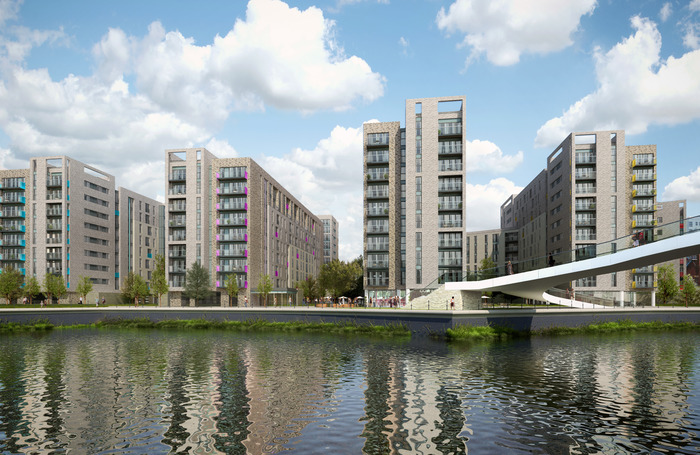New figures for build-to-rent development show the sub-sector ignoring the vagaries of the wider housing-for-sale market and powering ahead, particularly in the regions, where the number of new homes in planning has increased by over 30% in the past year.
Last year the British Property Federation (BPF) commissioned Savills to produce quarterly data on build-to-rent, an emerging area of housing development virtually unheard of in the UK only four or five years ago. The latest numbers show that 124,000 homes are now completed, under construction or in the planning system in the UK.

After a 30% jump in the number in planning to almost 30,000 outside London, the regions are now rapidly catching up with the capital, where an increase of 9% took the number in planning to over 34,000.
Though London-centric in the early days, the total build rate across the regions is now well ahead of London, and the total number of build-to-rent homes at all stages is also a whisker ahead for the first time. The development hotspots of Manchester and Liverpool mean that the North West is the most active of the regions.
The BPF maintains a build-to-rent map of the UK that tracks projects from pre-planning to completion.
Laurence Osborn, director of GRID Architects and one of the pioneers of build-to-rent in the UK, says new clients continue to enter the market and reports growing interest among traditional housebuilders.
‘On large sites, build-to-rent gives a mix of tenures. Housebuilders are looking to either sell off part of the site or develop it themselves for build-to-rent. We are also getting regular enquiries from operators asking if we know of sites they can buy into.’
Savills’ head of residential research, Jacqui Daly, sees growing evidence that large sites need a range of tenures to speed up build out rates and that build-to-rent should be part of the mix. By bringing in a forward funder, build-to-rent can also help to de-risk large schemes and create an early sense of space as tenants move in and provide footfall for on-site amenities.
Earlier this year, Savills predicted that the build-to-rent pipeline (under construction and in planning) could double to 200,000 units within two years.
The build-to-rent model looks attractive to policy makers, too, because the sector is bringing in new institutional investment for developers and operators who like to build at scale and build out fast. Unlike housebuilders who prefer to drip-feed the local housing-for-sale market, build-to-rent operators want to see a revenue stream from rents as quickly as possible.
Build-to-rent could be about to gain from the imminent revisions to the National Planning Policy Framework (NPPF). The draft calls for local planning authorities to assess the need for rented accommodation in their areas for the first time alongside general housing need. Apart from a few local authorities that have been championing build-to-rent, planners have not historically looked at the sector as a separate use class that needs to be addressed.
From a housing quality standpoint, private sector build-to-rent tends to be more architect-friendly than volume housing for sale. Professional landlords are looking to operate buildings for twenty years or more and so want to see high build quality with better materials and finishes that will keep tenants happy and incur few defects and low maintenance costs.
Osborn explains that the business drivers of build-to-rent projects are different to traditional house building; it is all about long-term revenue streams rather than short-term profits.
Formats are driven by location and local rent levels. In the regions, lower rentals tend to support less amenity space, for instance, while in London developments may include apartment layouts designed for sharing, which tends not to be required outside of London.
In Manchester, where more than half of the homes with planning are in the private rented sector (PRS), Leach Rhodes Walker director Christian Gilham says that while the growth of build-to-rent in the city has been rapid, he sees no signs of saturation.
‘You have to look at [purpose-built] PRS as a new sector that has come from a standing start. It is not just institutions that are investing, developers are building apartments for investors both large and individual, within fully-managed apartment blocks.’
While the earliest professionally managed build-to-rent projects in the UK borrowed from North American models, UK developers now see the scale of the UK market offering scope for a variety of home grown models. Figures from Savills show that 17% of build-to-rent homes are houses, demonstrating that the UK has already moved on from the US ‘Condo’ model.
Thanks to Laurence Osborn, Director, GRID Architects; Christian Gilham, Director, Leach Rhodes Walker.
Text by Neal Morris. This is a Professional Feature edited by the RIBA Practice team. Send us your feedback and ideas
RIBA Core Curriculum Topic: Business, clients and services.
As part of the flexible RIBA CPD programme, Professional Features count as microlearning. See further information on the updated RIBA CPD Core Curriculum and on fulfilling your CPD requirements as an RIBA Chartered Member.
Posted on 19 July 2018.









